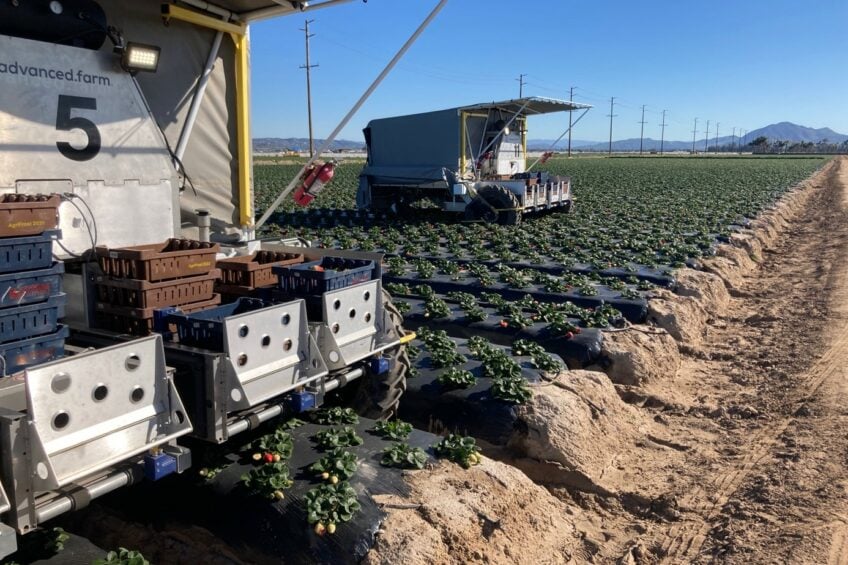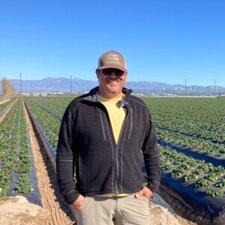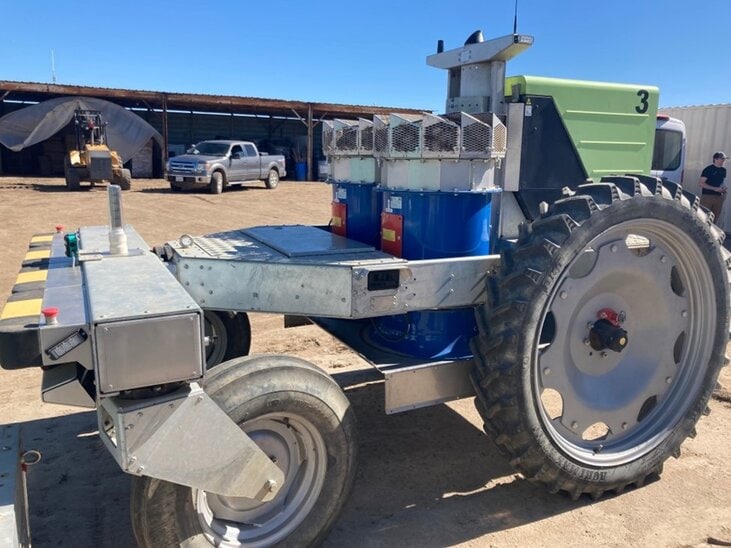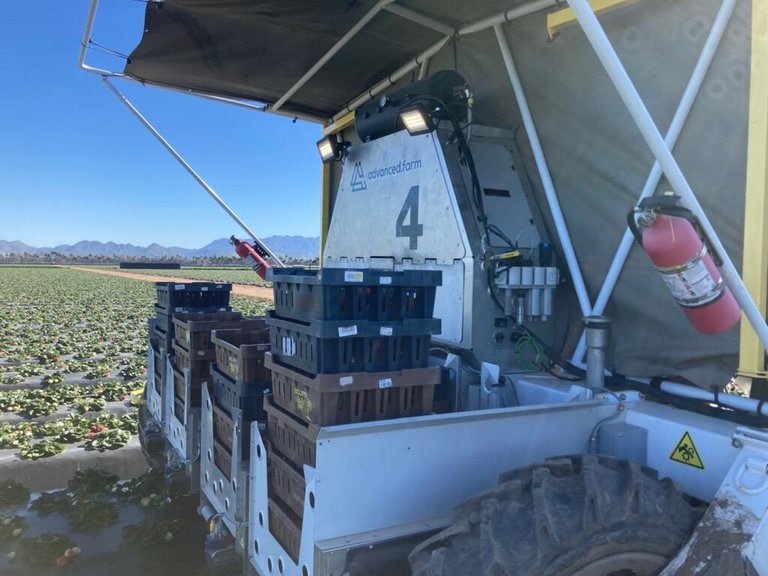Are automatic outdoor strawberry harvesters really worth the investment?

Advanced Farm claims to be one of the leaders in the automation of outdoor strawberry picking, but is it really living up to its promises?
We spoke with Matt, a strawberry grower who has been working with Advanced Farm robots for 4 years, to get his honest opinion about their harvesting solutions.
The grower and his farm
Name: Matt Conroy
Age: 47 years old
Position: District Manager at Good Farms
Localization: Oxnard, California, USA
The farm: 100 acres of conventional strawberries / 40 hectares
Growing system: Elevated beds / 4 rows of strawberries / 162 cm wide

Technical data
Technology type: 3 harvesting machines made by Advanced Farm
Year of implementation: Start in 2019
Operated area: N/A
Maintenance and upgrade costs: $0
Subscription price: Varies around $5 000 per machine per month
Pros and cons
+ Autonomous picking capacity
+ Easy to operate in a fleet with one operator
+ Fast improvements
+ Manufacturer reactivity and collaboration
– Low Productivity
– Not cost-efficient yet
– Picking quality can improve
– Complicated logistic
Why did you decide to work with Advanced Farm?
Advanced farm is the third harvesting company that I have worked with. At Good Farms, and more particularly this ranch, we experiment a lot with innovative technologies. Using these new technologies in our farm process is crucial in developing the production of the future.
You said that you are working with another innovative product, can you tell us more about it?
We are working with another machine that sucks in a certain type of pest from our strawberries. We are also piloting a project related to irrigation. The main objective of this project is to automate the operation and make it as effective as possible because irrigation is a key issue in our region.
Text continues below image

How is the machine controlled and what happens when there is a problem with the machine?
The control of the machine is very easy. On the row, the machine does not need any assistance and it lets itself be guided by the beds. At the end of the rows, the harvester waits for the operator to move it to the next row. For this step, the operator has a controller placed on the machine. The system is basic and very affordable.
Concerning the troubleshooting and all the data feedback in general, Advanced Farm has developed a smartphone application that is continuously in contact with the machine. The operator and engineers have direct access to all the data. It is easy for them to communicate, correct and improve defects as quickly as possible.
How do you use the machine on your farm?
Our machines stay in the same area during the whole season, from January to June. We use them in a fleet strategy which is coordinated by one operator. The machines run 6 days a week, 10 hours a day and we pick up the same field every other day. We are usually able to harvest 5 to 10 acres a day (2 – 4 ha/day). The machines go over the rows first after which we have a harvesting crew who will pick up the berries that the machines left behind.
Sending the machines first allows us to measure the time saved by the crew. This is the best approach we have found to optimize performance, obtain data and be able to quantify improvements.
Text continues below image

How many fruits does a machine pick per hour?
Every machine is equipped with 4 robotic arms. Each machine can pick about a thousand berries per hour which represent around 30 pounds (13kg) per hour. For reference, a human can reach up to 70 (30kg) pounds per hour. So we still have a little way to go.
With the current productivity, how many machines would you need to be able to harvest this farm?
With the results we are getting right now, it would take 15 machines to pick up my 100 acres of strawberries. Of course, that is not economically feasible. That is why we try to keep improving to make these machines more and more efficient. But, I am convinced that there will be a time when these machines are as productive as humans.
How much does it cost to work with these machines? Is it already profitable for you?
I pay a monthly rent to have these machines working in my field. The amount may vary from month to month depending on the productivity of the machines. Additionally, I pay for the salary of the operator. However, I have no additional costs for the maintenance, repair or upgrading of the machine.
If you ask me if economically it makes sense for me to have these machines here, the answer is no. However, even though it is expensive for us to have these machines, it is our future, and we cannot escape it. So, if we do not let these innovative companies work to find solutions to our problems, we will never be able to move forward.
In conclusion, while Matt does see the value in investing in innovation and new technologies, he acknowledges that the current state of these machines is not yet cost-effective or efficient enough to replace human labor. On the other hand, it seems only a matter of time before the strawberry-picking robot catches up with the workers on capacity and quality.
Want to see more of Matt and his new technologies?
Watch the video below to not miss any important information!
Join 17,000+ subscribers
Subscribe to our newsletter to stay updated about all the need-to-know content in the agricultural sector, two times a week.



